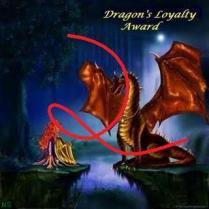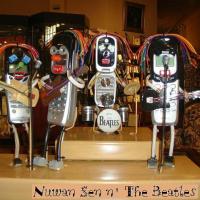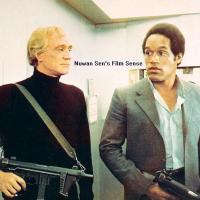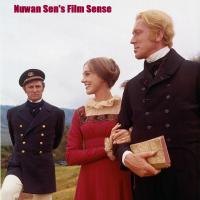A Page From History – Rewind to 1940
A look back at The 12th Annual Academy Awards, held in February 1940.
 The 87th Annual Academy Awards, will be held tonight. Really looking forward to catching the live show (tomorrow early morning out here), to see who wins what.
The 87th Annual Academy Awards, will be held tonight. Really looking forward to catching the live show (tomorrow early morning out here), to see who wins what.
So, for today’s post, I’ve decided, to travel back in time, to celebrate this years Oscars, with an insight, into the 12th Annual Academy Awards, from the ‘Year 1940’.
BEST PICTURE
The civil war epic Gone with the Wind (1939), grabbed the ‘Best Picture’ Oscar that year. No doubt the Best movie to come out of the 30’s decade, Gone with the Wind, has aged well, and happens to be amongst the best loved Hollywood classics ever, from the 120 year history, of global cinema. Gone with the Wind received 13 nominations altogether, and took home 10 Academy Awards (8 from the competition, out of the 13 nominated, plus 2 Honorary awards). Among the winners, of this highest grossing film of 39’, included:-
- The ‘Best Director’ Oscar to Victor Fleming. Although, initially, after the script went through many a revisions, it was Director George Cukor, who started working on this project. But Cukor was fired after three weeks of shooting, due to a disagreement, regarding the film’s pace and the script, between Producer David O. Selznick and Cukor. Actresses, Vivien Leigh and Olivia de Havilland heard that Cukor was fired, while the ‘Atlanta bazaar scene’ was being filmed, the two actresses apparently went straight to Selznick’s office, in full costume, and requested him to reconsider, as the film had already been delayed by two years, due to various other problems. Then Victor Fleming, took over the reins, for most of the project. But Fleming briefly left the project due to exhaustion, and director Sam Wood, worked on the film for a couple of weeks. Soon Fleming came back to complete the picture. Thus, though Victor Fleming directed majority of the picture, about 15 to 20 percent of the direction, should be credited to Cukor and Wood, each (i.e. 30 to 40 percent of the whole film). Thus, Victor Fleming was responsible for directing about 60 odd percent of this classic film.
- The ‘Best Actress’ Oscar to Vivien Leigh. The search for someone to play the lead character, of Scarlett O’Hara, led to 1,400 potential Scarlett O’Hara’s being interviewed. Bette Davis, Katharine Hepburn, Jean Arthur, Lucille Ball, Susan Hayward, Lana Turner and Paulette Goddard, were some of actresses tested for the part. None seemed to be right to play Scarlett O’Hara. When David O. Selznick watched the British flick, A Yank at Oxford (1938); an excellent film, related to sports and sportsman, starring Robert Taylor, in the lead; O. Selznick felt the British actress Vivien Leigh, was an excellent actress, but too British to play O’Hara. Yet Leigh was given a series of screen tests to do, and Voilà!! O. Selznick found his O’Hara.

Hattie McDaniel became the first African-American ever, to be nominated and, to win an Academy Award. She bagged the Oscar for BEST SUPPORTING ACTRESS, for her incredible performance as ‘Mammy’, in Gone with the Wind (1939) NSFS
- The ‘Best Supporting Actress’ Oscar to Hattie McDaniel. Hattie McDaniel became the first African-American ever, to be nominated and, to win an Academy Award. Olivia de Havilland, from this same epic tear jerker, too, was nominated, in this same category.
- The ‘Best Screenplay’ Oscar to Sidney Howard. Sidney Howard died in August 1939, thus became the first person to garner a posthumous Oscar nomination and win.
- The ‘Best Cinematography (in Colour)’ to Ernest Haller & Ray Rennahan.
- The ‘Best Art Direction’ to Lyle Wheeler.
- The ‘Best Film Editing’ to Hal C. Kern & James E. Newcom.
- An ‘Honorary Award’ to William Cameron Menzies. The production designer and art director, was acknowledged for his outstanding achievement in the use of colour, for the enhancement of dramatic moods, in the production of Gone with the Wind.
- The ‘Technical Achievement Award’ to Don Musgrave and Selznick International Pictures. Which was yet another ‘Honorary Award’, for pioneering in the use of coordinated equipment, in the production Gone with the Wind.
Added to these 10 trophies, Producer David O. Selznick, was also given the ‘Irving G. Thalberg Memorial Award’ for his body of work, which includes this epical classic. Gone with the Wind was the highest-grossing film of all-time, back then, and remained so until, 1965, when The Sound of Music (1965), displaced Gone with the Wind, as the highest-grossing film of all-time. When adjusted for monetary inflation, it is still the most successful film in box-office history, till date. Added to which, Gone with the Wind, set records for the total number of Oscar wins, and nominations, at the time.
This, almost four hours long, timeless masterpiece was also nominated for; ‘Best Actor’ to Clark Gable, Gable lost out to Robert Donat, who won for Goodbye, Mr. Chips (1939), a movie I haven’t watched, thus can’t judge, but Gable’s, now famed, role of Rhett Butler, is definitely Oscar worthy; ‘Best Special Effects’, but lost out to a movie called The Rains Came (1939), am bit surprised here, though I haven’t watched The Rains Came, am aware that Gone with the Wind has some exceptional visual effects for it’s time, sans modern day CGI, especially the ‘Burning of Atlanta’, the scene in which Rhett Butler and Scarlett O’Hara escape the burning city, saving three more lives, is so realistic, that the technique used, is till date, one of the most impressive feats in film history, Gone with the Wind was actually a breakthrough in special effects, at the time, despite that, it didn’t bag the Oscar for ‘Best Special Effects’, a pity; ‘Best Original Score’, which went to Herbert Stothart for The Wizard of Oz (1939), The Wizard of Oz is a brilliantly colourful children’s movie, with marvellously rhythmic music, but again, the superb background score by Max Steiner for Gone with the Wind, is unforgettable, and one can just drift off listening to the brilliant score, thus I feel Gone with the Wind, at least deserved two more wins, for ‘Best Special Effects’ and ‘Best Original Score’; ‘Best Sound Recording’, and lost out to a love story called, When Tomorrow Comes (1939), another film I haven’t seen.

Acting Duo, Husband & Wife to be, Laurence Olivier & Vivien Leigh.
Other films nominated in the ‘Best Picture’ category, included some amazing movies, after Gone with the Wind:-
- William Wyler’s brilliant adaptation, that was Wuthering Heights (1939), which was based on one of my favourite novels, spanning three generation, that I studied in school (Grade 8) when I was 13 years old, authored by Emily Brontë. Watched this movie, over a decade ago. Love the movie, almost as much as the book, besides the fact that a whole generation is missing in the movie. The film is still brilliant on it’s own. Nominated for 7 Oscars altogether; including for ‘Best Director’, ‘Best Actor’ to Laurence Olivier, and ‘Best Supporting Actress’ to Geraldine Fitzgerald; Wuthering Heights, won an Oscar for ‘Best Cinematography (in Black & White)’ to Gregg Toland.
- Ninotchka (1939), a hilarious comedy, where Greta Garbo plays a very rigid Russian woman, (i.e. the Soviet Union back then, under Joseph Stalin), with a lack of sense of humour, who is sent to Paris, France, on official business and learns to laugh and what true happiness is. The tag line reads ‘Garbo Laughs’. She also falls in love with the city, the free spirited and romantic Parisian society (pre-World War -II), and of course a handsome Count (played by Melvyn Douglas). Besides for ‘Best Picture’, Ninotchka, was nominated for 4 Oscars, including a ‘Best Actress’ nomination for Greta Garbo’s hilarious performance. Ninotchka was banned in the Soviet Union, at the time. Watched this a decade ago as well.
- The much loved children’s classic, The Wizard of Oz (1939), I watched when I was about 14. A little too late for me to enjoy, as I found it pretty childish at the time, but none the less I realised it was an excellent film for kids. Nominated for 13 awards, it won 2 Oscars, for ‘Best Original Score’ (as mentioned above) and ‘Best Original Song’ for the song ‘Over the Rainbow’. Then child actress, Judy Garland, won a special award, ‘Academy Juvenile Award’, for her exceptional performance as little Dorothy, in The Wizard of Oz.

Laurence Olivier & Vivien Leigh at the 12th Annual Academy Awards, held on the 29th of February, 1940 (They married later that year) NSFS
OTHER AWARDS & FILM NOMINATIONS
Only Angels Have Wings (1939), is a movie I got to study, back 2002, in my first semester, for the module ‘Film Analysis’ (where we analysed films of director, Howard Hawks), for my MA in International Cinema (2002-2003), University of Luton, Luton, UK. Only Angels Have Wings is a very good emotional drama, though not a great movie, starring Cray Grant, Jean Arthur and Rita Hayworth. This Hawks/Grant aviation classic, was nominated in only 2 categories, ‘Best Cinematography (in Black & White)’ and ‘Best Special Effects’, and won neither.

OSCARS 1940
The 12th Annual Academy Awards (NSFS)
Thomas Mitchell won the ‘Best Supporting Actor’ Oscar for Stagecoach (1939). A famous John Ford directed western (for which Ford was nominated), with John Wayne in the lead, that am yet to watch. Stagecoach also bagged the Oscar for ‘Best Musical Score’. Mr. Smith Goes to Washington (1939), another much loved classic, am yet to see, won an Oscar for ‘Best Original Story’. James Stewart was nominated for ‘Best Actor’, as well as Frank Capra, for ‘Best Director’, for this film.
American actor/screenwriter/film director/producer, Douglas Fairbanks, who died in December 1939, was given a posthumous ‘Honorary Award’, as well, for his contribution to the international development of the motion picture industry, as the very first President of the Academy. Douglas Fairbanks had hosted the very first Oscars Ceremony in 1929.
 The 12th Annual Academy Awards, was held on the 29th of February, 1940, at a banquet, in the Coconut Grove, at The Ambassador Hotel, Los Angeles, USA. Hosted by Bob Hope, this was the very first Academy Award function, Hope hosted. Bob Hope altogether ended up hosting the Oscars, a total of 19 times. I haven’t seen this show (obviously again as I didn’t, nor did my parents still, exist back then), but would love to check it out, some day. Yet I watched a few scenes from the show; online, on Youtube; including the celebrity guests arriving for the function, a very young Mickey Rooney presenting young Judy Garland with the special award, and Hattie McDaniel’s touching humble speech, paying credit to her ‘‘race and the motion picture industry’’, when she made history by winning the ‘Best Supporting Actress’ trophy.
The 12th Annual Academy Awards, was held on the 29th of February, 1940, at a banquet, in the Coconut Grove, at The Ambassador Hotel, Los Angeles, USA. Hosted by Bob Hope, this was the very first Academy Award function, Hope hosted. Bob Hope altogether ended up hosting the Oscars, a total of 19 times. I haven’t seen this show (obviously again as I didn’t, nor did my parents still, exist back then), but would love to check it out, some day. Yet I watched a few scenes from the show; online, on Youtube; including the celebrity guests arriving for the function, a very young Mickey Rooney presenting young Judy Garland with the special award, and Hattie McDaniel’s touching humble speech, paying credit to her ‘‘race and the motion picture industry’’, when she made history by winning the ‘Best Supporting Actress’ trophy.
GONE WITH THE WIND (1939) – Best Picture. Winner of 10 Academy Awards.
Nuwan Sen’s Film Sense
Nuwan Sen n’ the Oscars
P.S. Also see my previous post 50 years ago – At The Oscars.
























Great memories, fine tribute, Nuwansen 🙂
Thank you!!
What a fantastic post. Really learnt a lot from it. Hattie Macdaniel’s acceptance speech was lovely.
Thank you Alex. True it was a really sad, yet beautiful, speech.